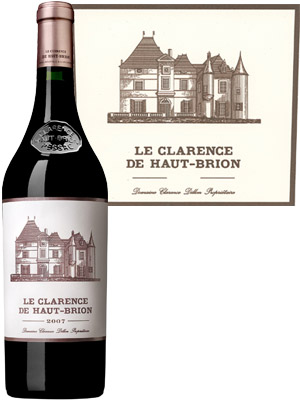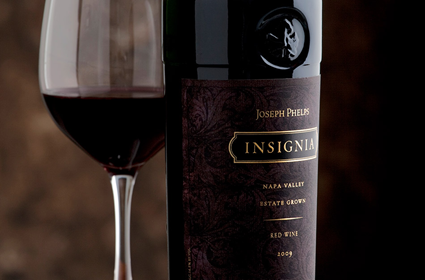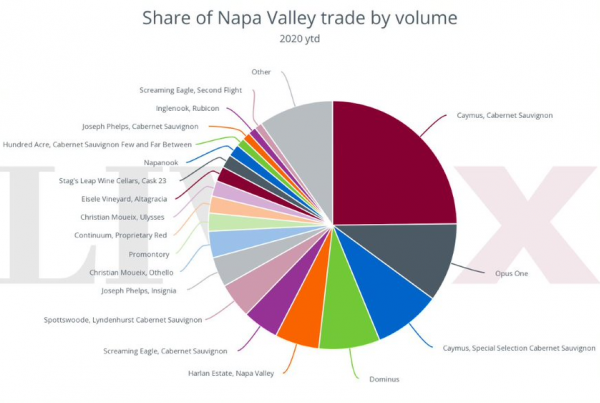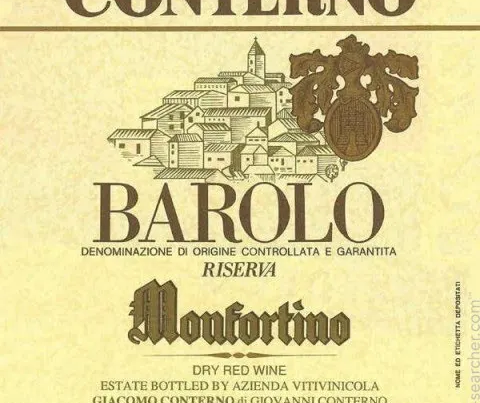Owner: Domaine Clarence Dillon
Average annual production: 84,000 bottles p/a
Colour: Red
Standard blend: 51% Merlot, 34% Cabernet Sauvignon and 15% Cabernet Franc
History
Clarence Haut Brion is the second wine of famed First Growth Haut Brion and has been produced by the Graves estate since at least the 1700s. Vines are known to have been planted at Haut Brion for more than 500 years, though evidence suggests that the property’s winemaking history may well have its roots in Roman times.
The estate itself appears to have been established by Jean de Pontac – an influential Bordeaux parliamentarian who bought up neighbouring plots and commissioned the construction of the chateau in 1549. Haut Brion was run by the Pontac family until 1654 and then passed through marriage and inheritance to the widow of François-Joseph de Fumel. The Fumels did much to promote the quality and reputation of their wines and were famously visited by Thomas Jefferson, who had six cases of Chateau Haut Brion exported to his estate in Virginia in 1787. In true revolutionary fashion however, the Terror of the 1790s saw then-owner Joseph de Fumel executed at the hands of Madame le Guillotine. And though Joseph’s nephews later reclaimed the estate, they sold it to Charles-Maurice de Talleyrand Périgord – the French foreign minister – in 1801.
In the 19th century the estate was bought by numerous businessmen, including Joseph Eugene Larrieu. The Larrieu family purchased sections of land that had been sold off in the preceding centuries and saw Haut Brion classified as a First Growth in 1855, alongside Lafite, Latour and Margaux of the Medoc. In 1923 the Larrieus sold the underperforming estate and in 1935 it was bought (some might say rescued) by Texan financier Clarence Dillon. The chateau has remained in their control ever since, and is currently headed by Prince Robert of Luxembourg – President Directeur General of Domaine Clarence Dillon.
Having been known as Bahans Haut Brion for 100 years (or more), the second wine was renamed Clarence Haut Brion in 2007. A label similar to that of its grand vin was also adopted in a bid to emphasise the wine’s association with Haut Brion.
Clarence Haut Brion 2009
The 2009 vintage is a blend of 46% Merlot, 39% Cabernet Sauvignon, 13% Cabernet Franc and 2% Petit Verdot. Its alcohol is listed as 14%.
Clarence was released to a chorus of praise this year, led by Robert Parker and James Suckling who both assigned the wine 90-93 points. Parker describes the most recent vintage as "the greatest second wine made at Haut-Brion since the 1989.”
“The wine has a fabulous nose of incense, burning embers, forest floor, and black cherry liqueur. Fleshy, rich, full-bodied, but not over the top, as the minerality and structure move in, this is a super-duper effort.”
Suckling was as enthusiastic, if not as loquacious – “Full-bodied, with ultrafine tannins and gorgeous fruit. Caressing, silky finish.”
On the other side of the pond, Jancis Robinson accorded the vintage 17+ points (out of 20) – “pretty ambitious”.
The 2009 was released in London at a record high of £900 per 12x75cl case – more than double the current price of the 2008.
Market Trends
Like Pavillon Rouge and Carruades de Lafite, brand-conscious buying in the Far East appears to be igniting new demand for the second wine of Haut Brion. On average, vintages 2000-2008 have risen in value by 26% since the start of the year. Interestingly, however, it appears to be the older “Bahans” vintages that are generating the most demand. Vintages 2000 to 2006 have increased in price by more than 20% over the past year, whilst the 2007 (RP 87; £486) and the 2008 (RP 89-91; £433) have seen very little movement. Why the anomaly? Both of the “Clarence” vintages were released in London at much higher prices than their predecessors as part of an effort to reposition the brand. As a result, upon release they were trading at the same level as older vintages that had already spent a number of years in bottle. Asian buyers also tend to favour physical vintages, which could explain why the 2007 (which recently became available physically) has seen more notable price appreciation this year than the 2008.
Despite its price stagnation over the past year, the 2008 may well come to represent strong value. The vintage is currently less than half of the price of Forts de Latour 2008 (RP 91-93) and a sixth of the price of Carruades (RP 91-93).
The table below shows the current prices of Clarence Haut Brion vintages 2000-2009.
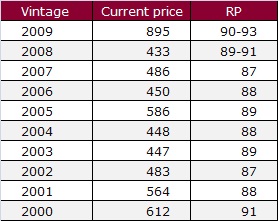
All prices are in GBP for 12x75cl cases stored in bond. Scores from erobertparker.com.

